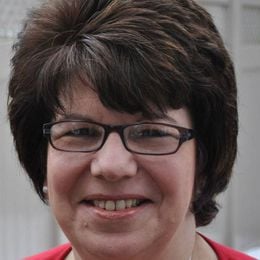Opioid Crisis Takes a Toll on Rural Older Adults
More community-based programs and services are needed
(Editor's note: This story is part of a special report for The John A. Hartford Foundation.)

The opioid crisis and its fallout are very real for the older population. For rural older residents, opioid addiction presents an especially difficult set of circumstances. Shortages of qualified health providers, a lack of treatment programs or an inability to access the few available clinics mean many go without appropriate care.
Even if not addicted themselves, rural older adults may suffer because limited community resources must be diverted to deal with the problem.
That means ambulances, doctors, nurse practitioners, mental health professionals, clinics and hospitals may be unable to serve the day-to-day needs of rural older populations, according to John Feather, CEO of Grantmakers in Aging (GIA), an organization of philanthropy groups.
A new GIA report calls for more grant funding for community based programs and services to help ensure that vulnerable older adults continue receiving needed care.
"It creates a crisis sense of community priorities," he said in a phone interview. "While a great strength of rural communities is their cohesion, at some point the system gets so stressed it's not able to respond as effectively as it should."
Opioid Overdose Deaths Increasing
Since the year 2000, an estimated 300,000 people in the United States have died of an opioid-related overdose. An estimated 2 million Americans have an opioid use disorder, according to the GIA report.
Death rates by opioid overdose, including prescription and illicit drugs, are increasing among all age groups — but the greatest percentage increase is among adults ages 55 to 64, according to the Centers for Disease Control (CDC). And in 2015, the most recent year for which data was available, adults aged 45 to 54 had the highest rate: 30 per 100,000. Data from the federal Substance Abuse and Mental Health Services Administration (SAMHSA) also confirm the rate is increasing among those over 50.
This group will struggle into their 60s and 70s if the problem isn’t more urgently addressed, said Dr. Susan Kansagra, opioid lead and section chief of the Chronic Disease and Injury Section, North Carolina Division of Public Health. Her state has seen a 73 percent spike in opioid-related deaths since 2005. From 1999 through 2016, 12,000 North Carolinians died from opioid overdoses. Nearly 27 percent of those were between ages 45 and 64.
Chronic Pain Helps Fuel Crisis
Approximately 10 million people age 65 and older live in rural America. The CDC says these residents tend to be older and sicker than their urban counterparts, have higher rates of poverty, and less access to health care. A severe shortage of rural physicians, psychiatrists and therapists puts further strain on the health system in many counties, according to the National Rural Health Association.
Many people in their 60s, 70s and 80s suffer from chronic pain because of the heavy physical or manual labor they did when younger, said Jessica Estes, a psychiatric mental health nurse practitioner in Lewisport, Ky. However, rural areas provide few opportunities to obtain non-opiate therapies for pain, like physical therapy or acupuncture.
In rural parts of Kentucky, "you have to travel a fairly large distance to get access to that, and seniors can't afford to put that much gas in their car, nor can they necessarily drive perhaps hundreds of miles themselves," Estes said.
Additionally, many facilities don't accept Medicare or Medicaid, although nationally, about 20 percent of those 65 and over are "dual eligible," meaning their incomes are low enough to qualify for both. They make up about 34 percent of all Medicare spending, according to the Centers for Medicare and Medicaid Services. They are also more likely to have multiple chronic health conditions and greater long-term care needs.
An Unexpected Result
Most older people don't start out thinking they'll get addicted to pain medication. Maybe they had a knee replacement or get injured in a fall and start on prescribed opioids after surgery, then can just never get off them, Estes explained.
"But when you start talking about addiction, people get defensive because of the stigma and they feel like you're criticizing their choices," she said. Older patients may also suffer from undiagnosed depression, which is a contributing factor to addiction.
A 2016 study published in JAMA Internal Medicine found that more than 25 percent of Medicare patients were prescribed opioids upon hospital discharge. The risk of opioid use one year later was four times greater than those who didn't receive a prescription. New opioid use was more likely among Medicare beneficiaries who lived in rural areas, received low-income subsidies or were dually eligible for Medicare and Medicaid.
Those living in the Appalachian Mountains of eastern Kentucky have "crazy high" rates of disability, Estes said. "We see a phenomenal number of opiate prescriptions written in that part of the state. A lot of it has to do with chronic pain issues."
Almost every state now has a prescription drug monitoring program, which helps providers and pharmacists monitor patients’ opioid and other prescription drug use.
"At the same time, we may be penalizing legitimate patients who may not be getting their pain treated as adequately as they might be," Estes said. Sometimes, that affects their mental health, which creates an entirely new set of problems.
Rural Residents Easily Overlooked
Unique challenges with geography limit the ability to find providers in close range that can provide specialized services if needed, according to Charlotte Haberaecker, president and CEO of Lutheran Services in America, a large health care and human services network.
"It's very easy for seniors in rural areas with opioid addiction to get overlooked,” she said. “They're not the largest group addicted, but are highly affected in many ways."
Health systems often don't want to invest in areas with limited populations, so the Lutheran Services of America works with urban-based addiction specialists to provide tele-support to rural primary providers. "It helps make [the providers] feel more comfortable being on the front line and managing patients with certain needs," she said.
Locally Tailored Solutions
Kansagra urges providers to adopt a more holistic approach to care, including emphasis on social determinants of health. Strategies must encompass transportation, housing needs, access to the right kinds of care and treating the whole person."As we invest in our communities, things like social services absolutely have an impact on health,” she said.
Nationally, only 11 percent of people with substance abuse disorders seek treatment, in part due to the associated stigma.
"We have to change the way we talk about it. It's not a moral failing. This is not due to poor impulse control. This is a disease and it needs treatment like any other medical condition," Kansagra said.
One program that is showing results is Project Lazarus in Wilkes County, N.C. It tailors responses to local needs and builds broad coalitions of emergency room physicians, local hospitals, primary care doctors, faith-based programs and law enforcement. Since 2008, opioid deaths have dropped in Wilkes County by 69 percent.
The GIA report urges more support for similar programs. “Every person and every community is affected by this crisis,” Feather said.
However, unique challenges in rural communities require tough choices about how to spend limited funding. They also provide opportunity for innovative solutions to ensure that the needs of older adults remain front and center.


